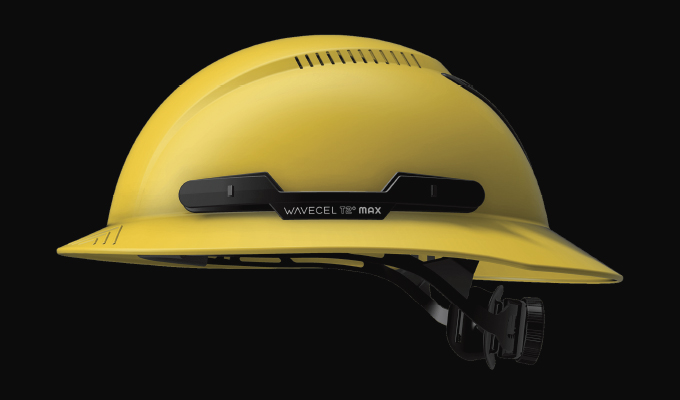Choosing the right helmet can be a daunting task. Helmets differ in style, price point, compliance with standards, and manufacturer’s claims of improved protection.
Selecting the best helmet is further complicated by the scarcity of test data that provide evidence-based guidance. This article provides guidance on three aspects critical for selection of helmets that deliver superior head protection, namely brain protection, lateral protection (Type II), and helmet retention.
BRAIN PROTECTION
Brain protection has been the blind-spot in helmet design. A September 2023 article in Occupational Health & Safety, titled “Addressing an Overlooked Danger”, stated that current helmet standards must be updated to account for rotational motion, which is the key cause of concussions on construction jobsites.
There are two types of head injuries, namely skull fracture and brain injury. Fracture of the hard but brittle skull is caused by a straight impact, similar to the impact induced to crack a brittle eggshell. A rigid helmet shell combined with an impact-absorbing liner or suspension greatly reduces the skull fracture risk by decreasing the force of a straight impact to the skull.
Conversely, brain injury is mainly caused by head rotation in response to an impact. Head impacts typically cause a short but forceful head spin that twists the brain and shears the soft brain tissue. Similar to severing nerves of the spinal cord, shearing of brain tissue causes irreversible damage that may lead to life-long suffering with staggering financial implications. Brain injuries can range from a mild concussion to severe traumatic brain injuries, whereby the cost associated with a single work-related traumatic brain injury typically exceeds $1 million.
Over 60 percent of work-related brain injuries are caused by simple slips, trips, and same-level falls. More than 90 percent of such brain injuries occur in absence of a skull fracture, which confirms that the soft brain is injured by a different mechanism than the hard skull. However, this vulnerability of brain to rotational forces is neither considered in standardized helmet tests nor accounted for in traditional helmet designs.
Sports helmets have adopted technologies to shield the brain from rotational force. One technology, called MIPS, is a plastic sheet that reduces transmission of rotational force by slipping during impact. These MIPS slip liners can be retrofitted into existing helmet designs and are available in a wide range of bike and snow helmets.
In contrast to this two-dimensional slip sheet, WaveCel technology employs a dome formed of a cellular structure that was designed to fold, crush, and glide during impact. Compared to standard helmets, it reduces transmission of rotational forces by up to 57 percent and reduces the risk of sustaining a concussion by 73 to 98 percent. These new rotation-damping technologies offer better protection than helmets equipped with an EPS foam core.
LATERAL PROTECTION
The strap suspension of traditional helmets is a directional design intended to absorb crown impacts but was found “practically useless against side, front and rear impacts” in a 1987 study. The authors of that study concluded that a new design was necessary, since most impacts are lateral, while only 15 percent of impacts occur to the helmet crown.
The US ANSI standard Z89.1 recognized this shortcoming and added a Type II designation, whereby Type II certified helmets are also tested for their ability to absorb lateral impacts. However, most helmets from leading brands still only delivered Type I “crown only” protection. This shortcoming was noted for hardhat style helmets as well as for “climbing-style” safety helmets. Many safety helmets employ a foam liner in addition or in place of a strap suspension, but this liner might be too thin or not extend far enough to the sides to pass Type II testing, as shown in a recent publication titled “Climbing style safety helmets do not improve impact protection over type II hard hats.” Selecting an ANSI Type II helmet is therefore important to provide protection for the most frequent lateral impacts.
HELMET RETENTION
A helmet only provides protection if it stays on the head during a fall, and chin straps can prevent a helmet from falling off. The US standard ANSI Z89.1 does not require chin straps but requires retention testing of chins straps if they are supplied with the helmet. In contrast, the European standard EN 12492, titled “Helmets for Mountaineers” requires chin straps. This standard is often used for “climbing style” helmets since it requires chin straps as well as lateral impact testing. However, lateral impact testing is far less stringent in EN 12492 than in the US standard ANSI Z89.1, because it utilizes a 20 percent lower impact energy, a flat rather than a focal impactor, and since the test area does not extend as far down to the brim as in the US standard.
For best head protection, choose helmets with chin straps. While an EN 12492 certification will ensure the presence of a chin strap, this standard is no substitute for meeting ANSI Z89.1 Type II performance.
CONCLUSION
When choosing a helmet based on available evidence of performance, consider the following three aspects:
- Choose a helmet with rotation-mitigating technology to reduce the risk of brain injury.
- Choose a helmet that is ANSI Type II rated to provide protection from lateral impacts.
- Choose a helmet with chin straps to ensure the helmet remains on the head during impact.
Factors pertaining to user satisfaction are also important for helmet adoption, including comfort, weight, heat, and style, but helmets should be selected based on performance, independent of a particular helmet style.
About the Author:
Michael Bottlang is the founder and director of the Legacy Biomechanics Laboratory in Portland, Oregon. His research has been funded by the National Institute of Health and he has published over 80 peer-reviewed papers. Dr. Bottlang is also a founder of WaveCel LLC. He can be reached at mbottlan@lhs.org.
Modern Contractor Solutions, February 2024
Did you enjoy this article?
Subscribe to the FREE Digital Edition of Modern Contractor Solutions magazine.



